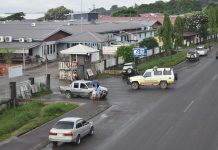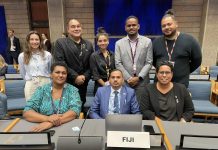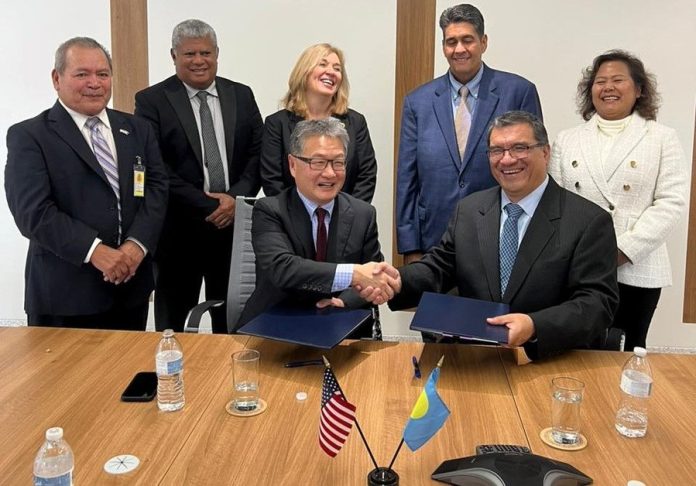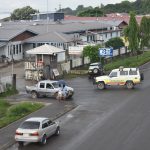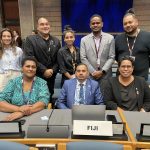By Ongerung Kambes Kesolei
In September 2021, Palau President Surangel Whipps Jr told world leaders at the 76th Session of the United Nations General Assembly that the Compact of Free Association between Palau and the United States has led to limited economic growth and hindered Palau’s ability to connect with certain members of the international community due to the “denial right,” which refers to Washington’s perpetual authority to deny potential adversaries access to land, airspace and territorial waters of the Pacific nation.
Whipps rejected the previous assistance package offered by the U.S, stating that it was “unacceptable” as determined by lower-level U.S officials in 2020.
Whipps argued that the COFA should have provided Palauans with a better quality of life at home. Instead, he claimed that the compact did the opposite. With its visa-free status for Palauans to live and work in the United States, Palau is losing its educated and able-bodied citizens to out-migration. He estimated that 40 percent of the Palauan population left the country to seek greener pastures since COFA’s inception in 1994. An estimated 8,000 Palauans have since migrated and have been replaced by foreign laborers.
This predicament formed Whipps’ philosophical approach to this second compact review on the 30th anniversary of the treaty.
“The low standard of living is one of the reasons young Palauans decide to relocate to the United States looking for opportunity,” Whipps said.
Fast forward: 16 months since that 76th UNGA speech, Kaleb Udui Jr, Palau’s chief compact negotiator, and Joseph Yun, U.S special presidential envoy for compact negotiations, signed a memorandum of understanding reflecting the consensus reached on levels and forms of future U.S assistance to be requested for Palau’s economic development.
What is clear at this point is that it will be a 20-year package and the last review until 2044, the 50th year of the compact, at which time Palau is expected to have built itself up to be an economically self-reliant country.
Nothing concrete about the agreement is known as of this writing, but we can look back at Whipps’ public statements and the press release on the MOU for the key themes that Palau brought to the table. Which begs the question, how does the outcome of this negotiation differ from the previous agreement in building opportunities while preventing Palauans from moving overseas?
The main focus of the agreement remains on providing “economic assistance for Palau’s government operations, infrastructure, and needs that would otherwise not be met as well as U.S domestic programmes.”
As reported, the negotiated value of the proposed package covering the next 20 years is more than twice that of the proposed 2020 economic package. Palau could stand to gain at least US$800 million, more than double the US$400 million that was reported by the local media in 2020, citing unofficial sources in the Palau government.
Given Palau’s current economic climate, with a projected three-year decline of a negative 23 percent in fiscal 2022 from pre-pandemic level in 2019, and external debts projected to reach 92 percent of the country’s gross domestic product in fiscal 2022, including the $60 million loans from the Asian Development Bank to mitigate the economic loss that resulted from the Covid-19 pandemic, it is uncertain if the negotiated agreement will provide much-needed reprieve for the country.
In a media statement last year, Whipps explained that the main goal of the economic package was to promote a better quality of life. The president emphasized that raising the minimum wage was crucial to improving the economic well-being of the citizens of Palau. “We have to raise the minimum wage to be at the level of Guam or Hawaii. Not that it is our goal, but the standard of living in Palau can’t remain as it is,” he said.
Whipps noted that Palau has been losing a significant number of trained professionals. This is a major concern for Palau’s development as the country needs a strong and well-trained workforce to build a resilient and prosperous economy. “What we need to show the United States is where we want to go. We have been losing teachers, doctors and police officers, so that’s part of the development that we need to bring up,” the president said.
Whipps has highlighted that the Compact Road—a 53-mile circumferential road around Palau’s main island of Babeldaob—will not only be used by the local citizens but also by the U.S military, thus making it an important strategic asset. “Like the Marine Corps Drive in Guam, in which the U.S military is spending money to repair so as well as our Compact Road,” the president said.
Whipps emphasised the need for the compact to include long-term provisions for federal programs, similar to the permanence of U.S defence rights under the agreement. He argued that these programs should not be negotiated every time, as it creates uncertainty and hinders the ability of Palau to plan for the future.“Under the compact agreement, the U.S defence right is perpetual, so it should be the same for the federal programmes that will be ending,” Whipps said. One of the specific requests Palau has made is to be reinstated into the Federal Emergency Management Agency programme.
While the specifics of the second compact review agreement have yet to be revealed, it is clear that the economic assistance package is set to be significantly more substantial than the previous one. However, it remains to be seen if it addresses Whipps’ concerns about the “denial right” and the loss of citizens to out-migration. Only time will tell if the new agreement will be more effective in building opportunities for Palauans and preventing them from moving overseas.
SOURCE: PACIFIC ISLAND TIMES/PACNEWS


